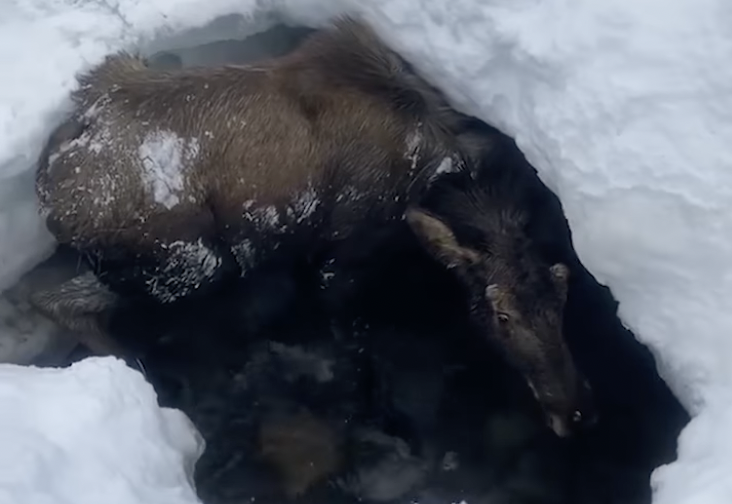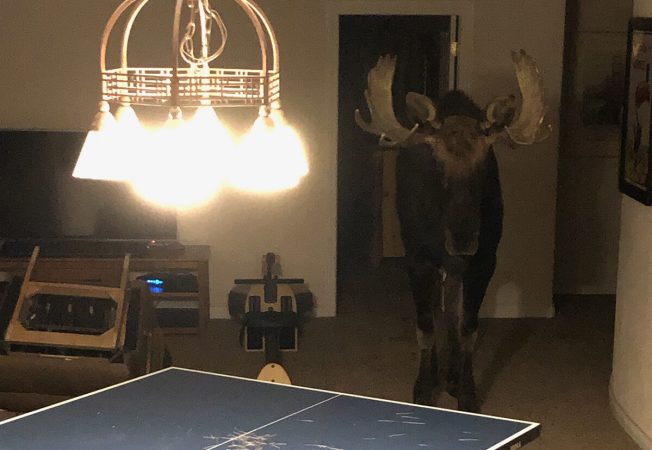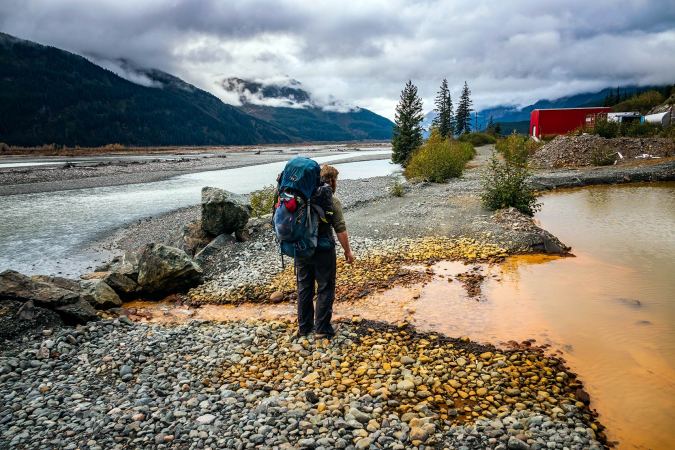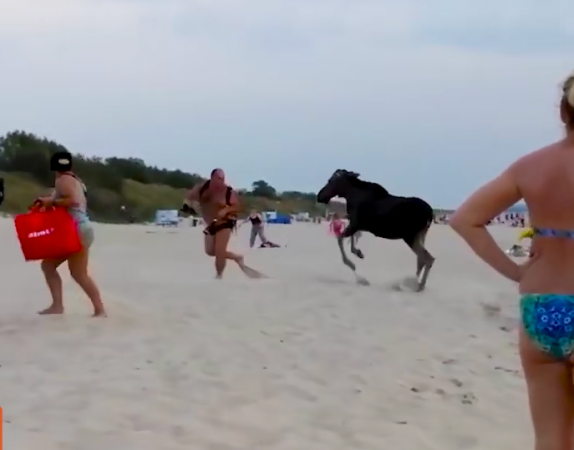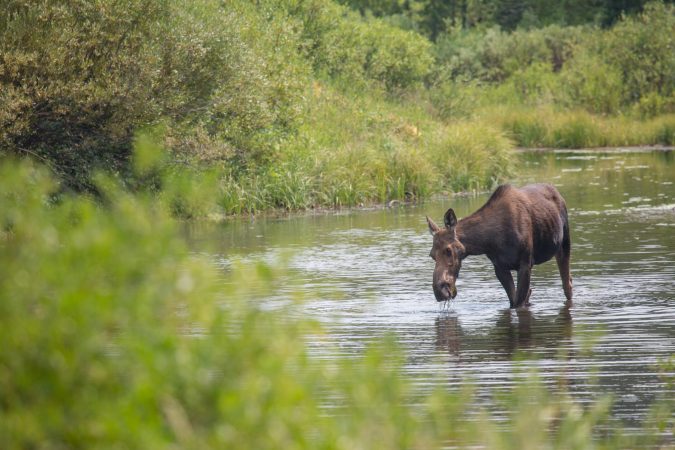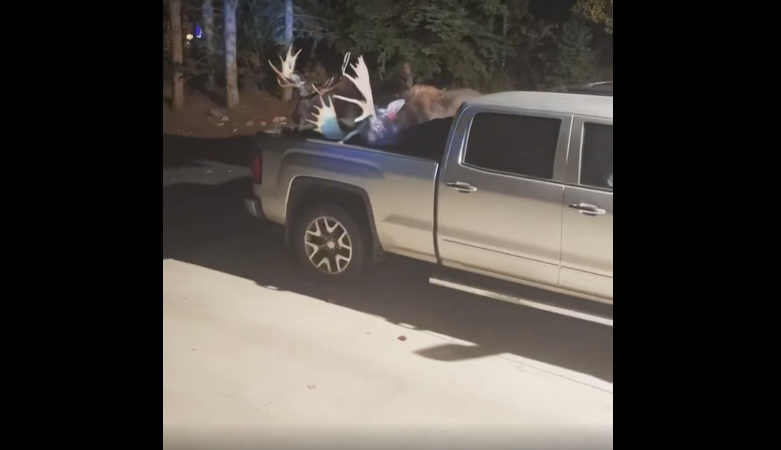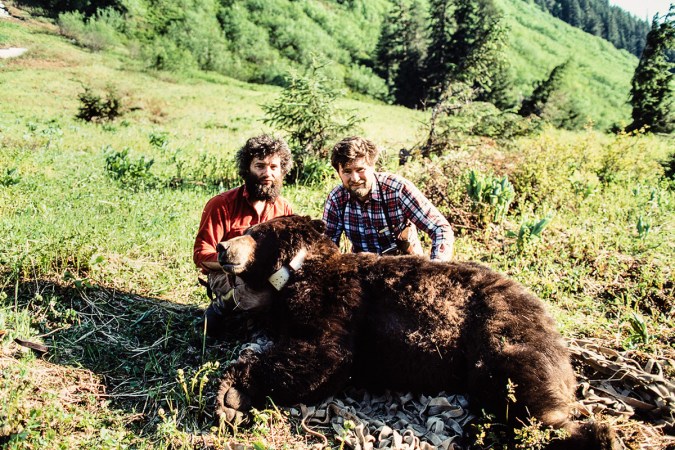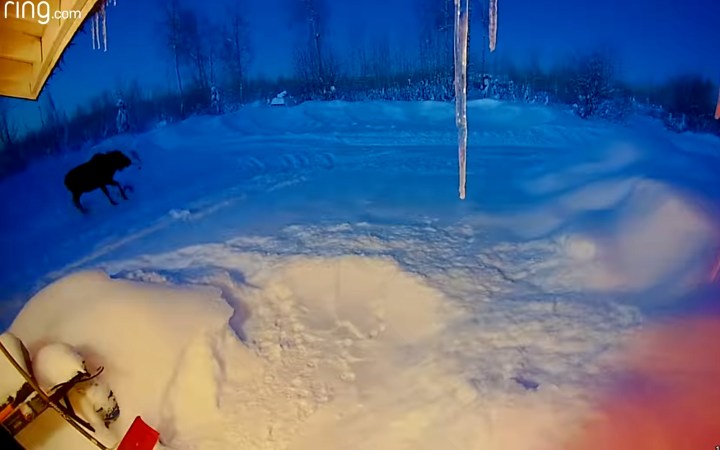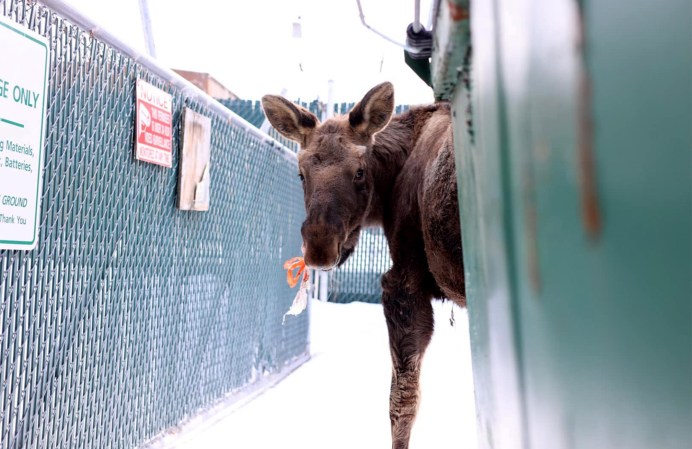A group of Alaskans were out riding snowmachines near Hatcher Pass last weekend when they helped a young bull moose out of a sticky situation. The moose had broken through a weak layer of snow and ice that covered a flowing creek, and was discovered floundering and trapped in the creek bed.
To help rescue the bull, the group pulled out their collapsible avalanche shovels and got to work. They were able to shovel out a path and build up a snow ramp that allowed the moose to climb out of the creek, and then they stuck around to watch him saunter off into the woods. They shared the rescue video to Xplore Alaska’s Facebook page, where it generated both enthusiastic thanks for helping the moose and criticism for intervening with Mother Nature.
In the video, the moose can be seen standing in the shallow running water under a layer of deep snow. He fell through a layer of shelf ice—a common waterway hazard in Alaska. When rivers and creeks freeze at high levels and then water levels drop, it can create air space under the ice, which results in weak spots.
Andrew Koerner, who captured the rescue on video, commented in a separate Facebook post that “[it] felt so right to help him.” Koerner also mentioned that a lot of the hair had been rubbed off the moose’s neck, which made him think that the animal had been trapped in the snowed-over creek for some time. The young moose would have almost certainly frozen to death had the snowmachiners not given him a leg-up.
A Tough Winter for Moose
Winters in Alaska are harsh in general, and despite being adapted to the climate, moose can still have a hard time. The weather patterns that have affected interior Alaska so far this winter have been exceptionally brutal, with high snowfalls in early December, followed by a short warm-up that produced heavy rains on December 26. This combination of deep snow and wet weather created even tougher conditions for moose.
The Alaska Department of Fish and Game sent out a press release earlier this winter calling attention to how deep snow conditions and rain events tend to stress moose and humans alike. The release advised people to give moose space, to keep their dogs on a leash, and to resist the temptation to “help” moose by feeding them. It also pointed out the hard truth that most winters impact moose populations, especially the calves that are trying to make it through their first Alaskan winter.
“This is going to be a very tough winter for moose, especially with deep snow and crust from the rain we had at the end of December,” ADF&G area biologist Tony Hollis said in January. “We don’t expect many of the calves to survive the winter but are hopeful the adults will be able to make it through.”
Moose attacks on dogs and people have been abundant in the Fairbanks area in recent months. We shared one story of a dog musher being attacked by a bull earlier this month, and one person was hospitalized in a separate incident. Hollis told Outdoor Life that he is aware of around 10 incidents where people have been attacked, along with unverified rumors of more.
Read Next: “He Was Charging Full Speed Right at Me.” The Alaskan Musher Attacked by a Moose Shares Her Story
“About half the people didn’t even see it coming,” Hollis says. “They just walked out their door or were not paying attention, and were attacked from behind. Fortunately, most incidents have resulted in the person getting knocked down, kicked a couple times, then the moose runs off.”
Another recent press release announced the cancelation of draw permit hunts for antlerless moose in units 20A and 20D for 2022. In the release, Hollis explains that the agency is taking a conservative approach and wants to evaluate the results of this winter on the moose population before allowing the harvest of antlerless moose in these areas.
Winter is a long way from over in Alaska. When much of the lower 48 is moving into spring in March and April, those are the months when Alaska’s moose begin to get stressed by the final stretch of winter in a normal year. We ultimately have very little control on how hard the winter is on moose, but it’s refreshing to see even one of them get a new chance at surviving it.

